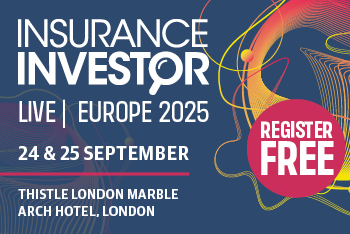 @Pixabay.
@Pixabay.
A new report from Morningstar highlighted the 2024 results for active bond and active equities managers across various regions, which showed growth – albeit at a sluggish rate.
The “European Active/Passive Barometer Report: Year-End 2024” report showed that “passive equity and fixed-income funds still outperform the market compared to their active peers in the long term”. The barometer evaluates active funds against a composite of actual passive funds—not versus a costless index. “In this way, the benchmark reflects the actual, net-of-fee performance of the passive funds available to investors,” said Morningstar.
“The average one-year success rate for active equity managers in the group of
categories analysed rose slightly in 2024 to 29.1% from 28.7% in 2023."
The results could give insights into strategies for operational reasons for fund managers and which side of the coin they could go for in the age-old ‘active versus passive’ debate.
The report highlighted changing market dynamics as a threat to fund managers that are consistently charging higher fees.
“The average one-year success rate for active equity managers in the group of categories analysed rose slightly in 2024 to 29.1% from 28.7% in 2023, however over the past decade it remained disappointingly low at 14.2%,” said Jose Garcia-Zarate, Senior Principal of Manager Research at Morningstar. “Active bond managers had a better run; their average one-year success rate stood at 53.5% in December 2024, up from 46.5% a year earlier, although it was down from 58.3% in June 2024, signalling that some of these managers were unable to adapt to quickly changing conditions in the second half of the year.”
Morningstar said the key takeaways from the report were that developed equity markets “continued their positive run” in the second half of 2024 despite a few hiccups caused by the scaling back of expectations for a fast pace of delivery of interest-rate cuts, particularly in the US.
“The electoral victory of Donald Trump fuelled the momentum in the fourth quarter, with the "Magnificent Seven" tech stocks leading the way,” it said. “Meanwhile, emerging markets found support on China's announcement of a comprehensive stimulus package to address its current [economic] challenges.”
“Inflation proved stickier than anticipated, and this led central banks to
tone down their bearish rhetoric. This caused a spike in yields."
The active managers' weighted success rate over one year for the 38 equity categories examined stood at 29.1% as of December 2024, up very slightly from 28.7% in December 2023. Over the past decade, the average success rate for active equity managers in the group of categories analysed remained disappointingly low at 14.2%.
Elsewhere, it noted that, generally, active managers “tend to achieve higher success rates within mid-cap and small-cap equity” categories compared with those focusing on large-cap stocks.
Also, it said that the bond markets experienced significant volatility in the last quarter of 2024. “Inflation proved stickier than anticipated, and this led central banks to tone down their bearish rhetoric. This caused a spike in yields,” it said.
For equities, the report noted that the US equity market had “strong performance in 2024”, led by the ongoing rally in the tech sector.
“This made it difficult for active managers to beat low-cost market-cap-weighted passive strategies, which have become the default option to gain exposure in this market,” it said.
In the US large-cap blend category, only 30% of active equity funds outperformed their passive competitors in 2024. In the US large-cap growth category, the one-year success rate for active managers was 36.1%, while in the US large-cap value category, it came in at a much higher 69.4%. The bulk of tech stocks driving the current momentum fall in the growth style bucket, and so value managers have enjoyed more latitude to find opportunities.
“This reinforces the long-held view that in these segments, where investors have access to well-diversified, low-cost passive options, it is especially challenging for active strategies to consistently outperform their passive composites,” it said. “The presence of these large and inexpensive passive funds sets a high-performance threshold for active managers, making it increasingly difficult for them to justify their higher fees.”
It remains to be seen what 2025 and its volatile start will mean for this question going forward.
Please Sign In or Register to leave a Comment.
SUBSCRIBE
Get the recent popular stories straight into your inbox







